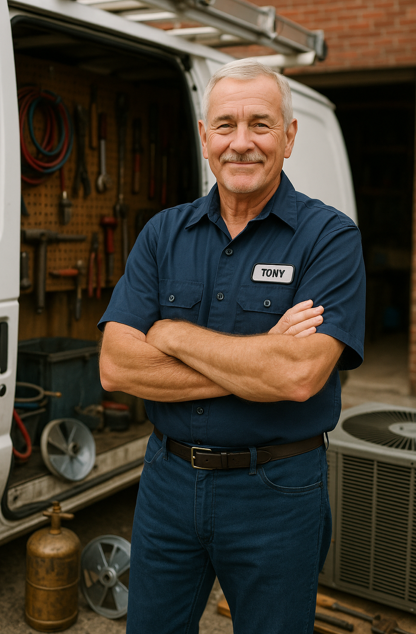1. R‑32 Safety Essentials: A2L Refrigerant Explained
R‑32 is classified as A2L—a mildly flammable refrigerant with low burning velocity and high ignition thresholds. That means it’s safer than informal jitters suggest. But rules exist for a reason: certified HVAC pros must follow specific safety protocols when transporting, installing, or servicing R‑32 systems.
Modern packaged AC units include safety valves, leak detectors, and ventilation pathways to automatically reduce the risk in normal operation.
2. Certified Installation: How HVAC Pros Keep It Safe
According to the U.S. Environmental Protection Agency (EPA), only technicians with Section 608 certification can legally work on R‑32 systems. Training includes:
-
Proper evacuation, recovery, and charging tools
-
Leak detection and compliance testing
-
Understanding A2L-specific pressure tests
-
Using explosion-proof equipment in potential leak zones
If your technician isn’t certified, simply ask. Protect your installation—and your home.
3. Equipment & Tools Designed for R‑32
Techs working with R‑32 don’t use the old R‑22 or R‑410A equipment. They have separate recovery cylinders, hoses, and charging tanks, all clearly labeled for world-class refrigerant purity. Tanks and components must meet UL safety ratings for mildly flammable refrigerants.
The major HVAC tool manufacturers—including Yellow Jacket and Fieldpiece—have released R‑32-specific toolkit lines.
4. Code, Clearance & Ventilation Requirements
Building and mechanical codes (aligned with ASHRAE 15 and UL standards) require minimum ventilation and clearance around packaged units to account for rare leaks:
-
Outdoor units must have unobstructed airflow—no walls, shrubbery, or debris
-
Mechanical rooms or garages must follow refrigerant volume-based venting estimates
-
After servicing: always conduct a visual refrigerant leak check and ensure sensors reboot correctly
For detailed ventilation charts and compliance info, refer to ASHRAE’s Refrigerant Safety Handbook.
5. How You Can Help Keep Things Safe
Homeowner participation matters:
-
Tell installers about pets, enclosed closets, or areas that might trap refrigerant
-
Keep unit clear of obstructions like lawn debris, storage, or tall grass
-
Ensure annual inspections include leak detection and odor checks
-
Replace batteries in any remote sensors installed after service
Letting your tech keep your system accessible and surveyed ensures smooth and safe operation.
6. Emergency Situations: Know What to Do
R‑32 rarely leaks—but if there’s unusual hissing or chemical smell:
-
Turn off the AC system and shut down breaker
-
Open windows or doors—do not use exhaust fans or spark-generating devices
-
Call a certified HVAC technician for inspection and recovery
Emergency services are not required unless the leak is large or involves a confined space.
7. The Bottom Line from Your Guy, Tony
R‑32 refrigerant is a big leap forward—mixing solid cooling performance with lighter climate impact. But A2L requires proper handling. Follow these guidelines:
-
Hire certified pros only
-
Expect leak checks and clearances during service
-
Stay aware—but not alarmed
-
Trust that modern systems are built to be safe, efficient, and long-lasting
🛒 Browse Safe R‑32 Packaged ACs
Every unit we sell ships sealed, inspected, and ready for safe installation:







